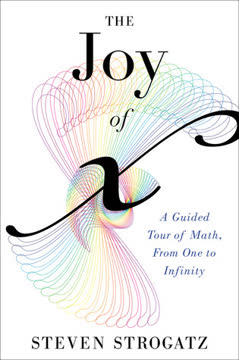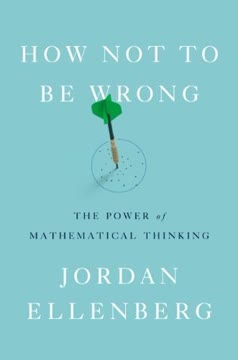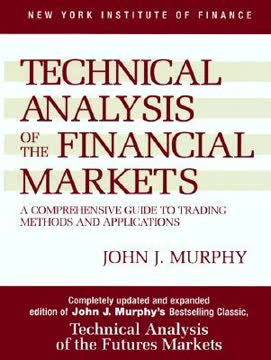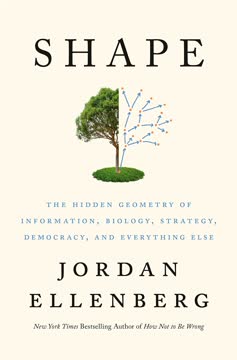つの重要なポイント
1. 数字に対する無知:広範に見られる数に対する無力さ
「数や確率の基本概念に対する無力さ、すなわち数字に対する無知は、他の知識が豊富な市民にも広く蔓延している。」
定義と影響。 数字に対する無知とは、基本的な数学的概念、特に数や確率を理解し、扱う能力の欠如を指す。この広範な問題は、教育を受けた人々を含むあらゆる層の人々に影響を及ぼす。数字に対する無知の結果は、単純な算数の誤りを超えて広がる:
- 個人の財務管理:予算編成、ローンの理解、投資機会の評価の困難
- 健康の意思決定:医療統計やリスク要因の誤解
- 政治的関与:数値データに基づく政策の批判的評価の欠如
- 消費者の選択:誤解を招く広告や詐欺に引っかかる
文化的受容。 他の無知の形態とは異なり、数字に対する無知は社会的に受け入れられやすく、さらには誇示されることさえある。人々は自分の小切手帳をバランスさせることができない、または基本的な計算を行うことができないことを誇らしげに宣言し、数学的スキルが生まれつきのものであり、学習によって得られるものではないという誤解を強化している。
2. 日常生活における見積もりと暗算の力
「一般的な大きな数に対する理解がなければ、毎年100万人以上のアメリカの子供が誘拐されているという恐ろしい報告に対して適切な懐疑心を持つことも、1メガトンの爆発力を持つ弾頭—100万トン(または20億ポンド)のTNTに相当—に対して適切な真剣さを持つことも不可能である。」
数感覚の発展。 見積もりや迅速な暗算の能力は、現代社会をナビゲートするために不可欠である。このスキルは、個人が以下のことを可能にする:
- 主張や統計の妥当性を迅速に評価する
- 時間が限られた状況で情報に基づいた意思決定を行う
- 様々な文脈でのスケールや比率を理解する
実践的な技術。 見積もりスキルを向上させるために:
- 計算を簡単にするために数を丸める
- ベンチマークや比較を使用する(例:国の人口、都市間の距離)
- 日常生活の状況で定期的に暗算を練習する
これらのスキルを磨くことで、人々は情報の批判的な消費者となり、個人および職業上の文脈でより良い意思決定を行うことができる。
3. 確率と偶然:出来事の可能性の理解
「逆説的な結論は、あり得ない出来事が起こらないことは非常にあり得ないということである。」
確率の直感に反する性質。 多くの人々は確率を理解するのに苦労し、出来事の可能性について誤解を招くことがある。この誤解は以下の結果をもたらす:
- 稀だが劇的な出来事に対する過剰反応(例:テロ攻撃)
- 一般的だがあまり報道されないリスクの過小評価(例:交通事故)
- 見かけ上の偶然に基づく疑似科学的な主張の信仰
主要な概念:
- 大数の法則:サンプルサイズが増加するにつれて、結果は期待される確率に収束する傾向がある
- 誕生日の問題:23人のグループでは、2人が同じ誕生日を共有する確率は50%
- 平均への回帰:極端な結果はより平均的なものに続く傾向がある
これらの原則を理解することで、個人はより合理的な意思決定を行い、あり得ないように見える出来事やパターンに惑わされることを避けることができる。
4. 疑似科学と数字に対する無知の関係
「実際、古い数学を適用することは新しい数学を発見するよりも難しい。どんなナンセンスでもコンピュータ化できる—占星術、バイオリズム、易経—しかし、それがナンセンスをより有効にするわけではない。」
疑似科学の魅力。 数字に対する無知は、人々が複雑な現象に対する簡単な説明を提供する疑似科学的な信念を受け入れる原因となる。一般的な例には以下が含まれる:
- 占星術とホロスコープ
- 霊的予言と超感覚的知覚(ESP)
- 科学的証拠のない代替医療
- 誤解された統計に基づく陰謀論
批判的思考スキル。 疑似科学に対抗するために:
- 反証可能な主張と再現可能な結果を探す
- 相関関係と因果関係の違いを理解する
- 確認バイアスなどの認知バイアスに注意する
- ピアレビューされた科学的な情報源を求める
これらのスキルを発展させることで、個人は正当な科学的主張と疑似科学的なナンセンスを区別し、様々な側面でより情報に基づいた意思決定を行うことができる。
5. 数字に対する無知と数学不安の心理的根源
「数学不安、シーラ・トビアスが数学不安と呼ぶもの。彼女は『数学不安を克服する』で、多くの人々(特に女性)が算数さえも含むあらゆる種類の数学に対して持つブロックを説明している。」
数学不安の起源。 数学不安と数字に対する無知の発展には多くの要因が寄与する:
- 数学に対する初期の否定的な経験
- 数学が本質的に難しいという文化的態度
- 数学に優れることができる人に関するステレオタイプ(例:性別バイアス)
- 概念の理解よりも暗記に重点を置く教育
精神的なブロックを克服する。 数学不安に対処するための戦略には以下が含まれる:
- 数学を抽象的な学問ではなく問題解決のツールとして再構築する
- 数学的概念の実世界での応用に焦点を当てる
- 複雑な問題を小さく管理可能なステップに分解する
- 支援的な学習環境とリソースを求める
数学的理解に対する心理的障壁に対処することで、個人は自分の能力に対する自信を高め、数字に対する無知を克服することができる。
6. 統計、トレードオフ、社会的意思決定
「無料のランチなど存在しないし、仮にあったとしても、消化不良の保証はない。」
政策における統計の役割。 統計リテラシーは、個人および社会レベルで情報に基づいた意思決定を行うために重要である。主要な概念には以下が含まれる:
- 世論調査や調査における誤差範囲と信頼区間の理解
- サンプルサイズと選択バイアスの重要性の認識
- 政策決定に内在するトレードオフの評価
競合する利益のバランス。 多くの社会的意思決定は、異なるリスクと利益を天秤にかけることを伴う:
- 公衆衛生対策と経済的影響
- 環境規制と産業成長
- 個人のプライバシーと集団の安全
統計リテラシーを向上させることで、市民は民主的なプロセスにより良く参加し、様々な政策提案のメリットを評価することができる。
7. 相関関係、因果関係、一般的な統計の誤り
「相関関係と因果関係は全く異なる言葉であり、数字に対する無知な人々はそれを混同しやすい。」
相関関係と因果関係の区別。 最も一般的な統計の誤りの一つは、相関関係を因果関係と混同することである。これにより以下の結果が生じる:
- 原因と結果の誤った帰属
- 重要な交絡変数の見落とし
- データからの誤った結論の導出
誤解の例:
- アイスクリームの売上と犯罪率の関連付け(両方とも夏に増加)
- 教育レベルが直接的に高収入を引き起こすと仮定する(家族背景、職業選択などの要因を無視)
一般的な落とし穴を避ける。 統計的推論を改善するために:
- 代替説明と交絡変数を探す
- 因果関係の方向性を考慮する(存在する場合)
- 選択バイアスとサンプリングエラーに注意する
- 観察研究と対照実験の限界を理解する
統計的概念のより微妙な理解を発展させることで、個人はデータをより適切に解釈し、誤解を招く結論を避けることができる。
8. 現代社会における数学リテラシーの重要性
「数学を有用なツールや思考の方法、または楽しみの源として捉えることは、ほとんどの初等教育カリキュラム(教科書が適切であっても)には非常に馴染みのない概念である。」
数に対するリテラシーの広範な影響。 数学リテラシーは以下のために不可欠である:
- 個人の財務管理
- 多くの分野でのキャリアの進展
- 情報に基づいた市民権と政治参加
- 批判的思考と問題解決スキル
数学教育の改善。 社会レベルで数字に対する無知に対処するために:
- 教育において数学の実践的な応用を強調する
- 問題解決と見積もりスキルをカリキュラムに組み込む
- 数学的能力に関する成長マインドセットを促進する
- 成人が数的スキルを向上させるためのリソースを提供する
数学リテラシーの重要性を認識し、個人および社会レベルでそれを向上させるための措置を講じることで、現代社会の複雑さをよりよくナビゲートするための情報に基づいた、批判的で有能な市民を育成することができる。
最終更新日:
FAQ
What's "Innumeracy: Mathematical Illiteracy and Its Consequences" about?
- Overview: The book, written by John Allen Paulos, explores the widespread issue of innumeracy, which is the inability to comfortably deal with numbers and probabilities.
- Consequences: It discusses the real-world consequences of mathematical illiteracy, such as susceptibility to pseudoscience, poor decision-making, and misunderstanding of risks.
- Examples and Principles: Paulos uses a variety of examples, from stock-market scams to pseudoscientific beliefs, to illustrate how innumeracy affects individuals and society.
- Educational Insight: The book also delves into the educational system's role in perpetuating innumeracy and offers insights into improving mathematical literacy.
Why should I read "Innumeracy: Mathematical Illiteracy and Its Consequences"?
- Awareness: It raises awareness about the importance of mathematical literacy in everyday life and its impact on personal and societal decisions.
- Practical Applications: The book provides practical examples and applications of mathematical concepts, making it relevant for understanding real-world issues.
- Critical Thinking: It encourages critical thinking and skepticism, especially towards pseudoscientific claims and misleading statistics.
- Educational Value: For educators and students, it offers insights into how math education can be improved to combat innumeracy.
What are the key takeaways of "Innumeracy: Mathematical Illiteracy and Its Consequences"?
- Importance of Numeracy: Understanding numbers and probabilities is crucial for making informed decisions and avoiding manipulation.
- Role of Education: The book highlights the need for better math education to prevent innumeracy from an early age.
- Skepticism Towards Pseudoscience: It emphasizes the importance of skepticism and critical thinking in evaluating pseudoscientific claims.
- Understanding Risk: Paulos illustrates how innumeracy leads to poor risk assessment and decision-making.
What are the best quotes from "Innumeracy: Mathematical Illiteracy and Its Consequences" and what do they mean?
- "Mathematical solecisms... are a bit like piles of garbage; no matter how often they’re picked up, they soon collect again." This quote highlights the persistent nature of mathematical errors and misconceptions in society.
- "Innumeracy, an inability to deal comfortably with the fundamental notions of number and chance, plagues far too many otherwise knowledgeable citizens." It underscores the widespread issue of innumeracy among educated individuals.
- "The surprising likelihood of coincidence is illustrated by the following well-known result in probability." This quote introduces the concept of how people often misunderstand the frequency and significance of coincidences.
- "The approach throughout is gently mathematical, using some elementary ideas from probability and statistics." It reassures readers that the book is accessible and not overly technical.
How does John Allen Paulos define innumeracy in the book?
- Definition: Innumeracy is defined as the inability to comfortably deal with numbers and probabilities, similar to illiteracy but with numbers.
- Consequences: It leads to poor decision-making, susceptibility to pseudoscience, and misunderstanding of risks.
- Examples: Paulos provides examples such as misunderstanding probabilities in gambling or being misled by statistics in the media.
- Educational Aspect: The book discusses how the educational system often fails to address innumeracy effectively.
What examples does "Innumeracy" provide to illustrate mathematical illiteracy?
- Stock-Market Scams: The book describes how innumeracy can lead people to fall for financial scams due to a lack of understanding of probabilities.
- Pseudoscience Beliefs: It highlights how innumeracy makes individuals more susceptible to pseudoscientific claims, such as astrology and parapsychology.
- Misinterpretation of Statistics: Paulos uses examples like misinterpreting medical test results or crime statistics to show the consequences of innumeracy.
- Everyday Decisions: The book illustrates how innumeracy affects everyday decisions, such as assessing risks in travel or health.
What educational insights does "Innumeracy" offer?
- Early Education: The book emphasizes the importance of integrating math into early education to prevent innumeracy from developing.
- Teaching Methods: Paulos suggests using puzzles, games, and real-world problems to make math more engaging and relevant.
- Teacher Competence: It highlights the need for competent math teachers who can effectively communicate mathematical concepts.
- Curriculum Improvement: The book advocates for a curriculum that focuses on understanding when and how to apply mathematical operations, not just performing them.
How does "Innumeracy" address the relationship between innumeracy and pseudoscience?
- Susceptibility: Innumeracy makes individuals more susceptible to pseudoscientific claims because they lack the skills to critically evaluate them.
- Examples: The book discusses astrology, parapsychology, and other pseudosciences as areas where innumeracy leads to gullibility.
- Critical Thinking: Paulos emphasizes the need for critical thinking and skepticism to combat the influence of pseudoscience.
- Educational Role: The book suggests that better math education can help reduce belief in pseudoscience by fostering analytical skills.
What does "Innumeracy" say about the role of probability in everyday life?
- Understanding Risk: Probability is crucial for understanding and assessing risks in everyday decisions, from health to finance.
- Coincidences: The book explains how people often misinterpret coincidences due to a lack of understanding of probability.
- Decision-Making: Probability helps in making informed decisions by evaluating the likelihood of different outcomes.
- Educational Importance: Paulos argues for the inclusion of probability in education to improve numeracy and decision-making skills.
How does "Innumeracy" suggest improving math education?
- Engagement: Use engaging methods like puzzles and real-world problems to teach math concepts.
- Teacher Training: Improve teacher competence in math to ensure effective communication of concepts.
- Curriculum Focus: Focus on understanding when and how to apply math operations, not just performing them.
- Early Integration: Integrate math into early education to prevent innumeracy from developing.
What are some common misconceptions about mathematics addressed in "Innumeracy"?
- Cold and Impersonal: The book challenges the misconception that math is cold and impersonal, showing its relevance to real-world issues.
- Mechanical Nature: It refutes the idea that math is purely mechanical, highlighting its creative and problem-solving aspects.
- Depersonalization: Paulos argues against the belief that math depersonalizes, showing how it can enhance understanding of individuality.
- Limiting Freedom: The book addresses the misconception that math limits freedom, demonstrating how it empowers decision-making.
How does "Innumeracy" relate to societal issues and decision-making?
- Policy Decisions: Innumeracy affects policy decisions by leading to poor risk assessment and misunderstanding of trade-offs.
- Media Influence: The book discusses how innumeracy in the media can lead to sensationalism and misinformed public opinion.
- Economic Impact: It highlights the economic consequences of innumeracy, such as susceptibility to financial scams and poor investment decisions.
- Public Health: Paulos illustrates how innumeracy affects public health decisions, such as misinterpreting medical statistics and risks.
レビュー
本書『Innumeracy』は賛否両論の評価を受けている。多くの読者は、数学的無知とその影響についての探求を評価し、著者の確率、統計、大きな数に関する説明を称賛している。しかし、一部の読者はその口調を見下すように感じ、例が古いと指摘している。批評家は、本書が深みと組織性に欠けると主張する一方で、支持者は日常の数学的概念に対する洞察を高く評価している。全体として、読者は数学的リテラシーの重要性については一致しているが、本書がその問題に対処する効果については意見が分かれている。
Similar Books

















